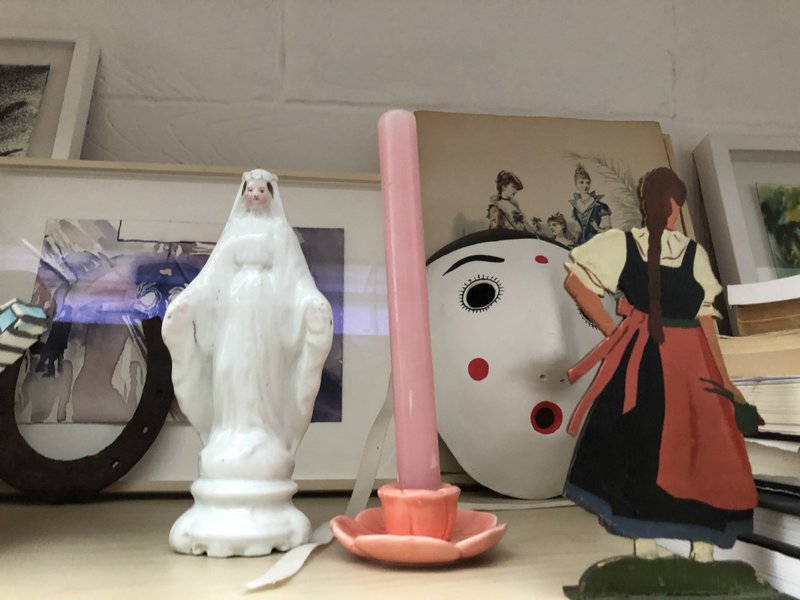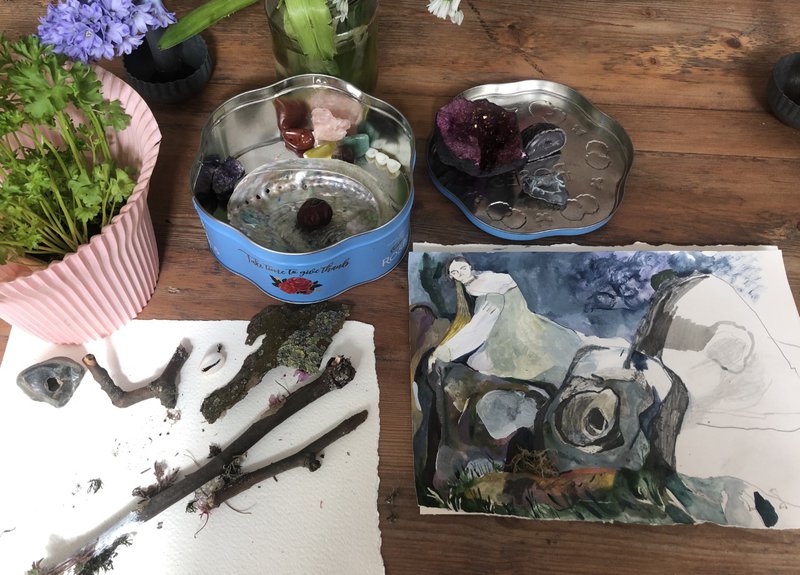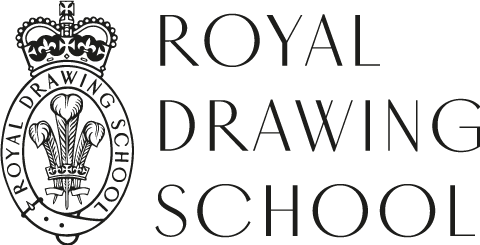Immersive narratives: An artists’ thoughts on taking liberties and constructing an alternative world
Drawing: Immersive Narratives tutors, Rebecca Harper and Melissa Kime consider the role an archive of source material can have in the creative process. They give students an idea of what to consider when starting their own archive and pose some interesting questions to ask when looking to your collection for inspiration and incorporating those themes into your work.

Rebecca Harper - Working from her archive of images
Rebecca Harper and Melissa Kime both work from life, memory, the autobiographical and the invented; tackling narrative through recasting familiar and recurring figures. Important to their individual working processes is collecting an archive of found imagery, as Martin Kippenberger puts it ‘embrace your past, whatever ugly boring background you had, that's where you’re going to find images, material’.
It is good for artists to have a reason and a pretext to do something, however meaningful or meaningless. Instead of purely taking or manipulating photographs, what if your approach to artmaking combines elements from memory and from life’s resources. That what you are doing is not ‘remembering’ or ‘depicting’, but building a fantasy – it doesn't matter, as long as it yields an image that satisfies you. Essentially we are aiming to do precisely what photography cannot do, which painting and drawing can, which is to take extreme liberties in constructing and building an alternative world.

Melissa Kime - Collection of source material
To start -
Begin by collecting a bank of imagery from a variety of sources that resonate strongly with you - be it: memory, art history, borrowing from magazines, film stills, newspapers, postcards, social media, Instagram, archives, fashion photography, photo archives on our phones and posters.
To consider -
You can use art historical references, which gives the illusion of tradition. However you do not need to engage with the technique, style or vision of the past as a primary issue, nor struggle with the notion of precursors and belatedness. These artists are safely available to use at your disposal or to re-cast as your own.
Collect imagery that resonates - find some things that grab you in particular in your chosen archive of imagery, but once summoned (requisitioned), collectively turn over all the images in your mind, examine them together, try to gauge what accommodations they demand, all of this helps to account for your work’s engagement. Engage with the sense that the whole world, even our mental experience, is a kind of image bank through which we wander.
Address the images’ visual texture, study everything about them – the history, the memory, the media in its various forms – see what offers itself to you as part of a free-floating repertoire of images and meanings. Ask yourself questions – Are there certain palettes that you are repeatedly drawn too? Are they similar in mood?

Melissa Kime - Taking inspiration from natural forms
How may we personalise all this source material and use this to construct our own narrative?
Think of Hockney who states that ‘everything is a translation of something else, the artist doesn't have to negotiate or compromise but has total control’ ‘there is no such thing as copying really, whatever the starting point or the medium, the individuals originality of his vision will always shine through’.
Dreaming helps us to consider - What is our own interesting, meaningful, historical troublesome past and present? Do we incorporate props that offer some type of description that is visual, symbolic or allegorical in their interpretation? Can we re- cast characters as stars, friends or family, people that resonate with us? Can we reclaim colour palettes, or depict colour as feeling, sensory and associative rather than realistic?
Perhaps it’s important that we think ultimately about treatment and image, where the treatment takes on its own life through its application. Does your material application match your intention? What are the possibilities of different visual worlds coexisting within the same space, to become collaged together, fragmented or assimilated? Or multiple images layered over the same surface playing reveal and conceal even? Consider what resonates with you personally, does it say something incommunicable? Let the images suggest itself.
You may come back to the same imagery time and time again- and so try this again and again.
Tal R says ‘invest in failing. Invest in loosing. Get comfortable with that. Don't ask why something meant something to you, but try to articulate it. Slowly you will find your way. There will be things you hate in your painting which will suddenly become your option and your possibility’.

Rebecca Harper - A personal collection of studies to work from



